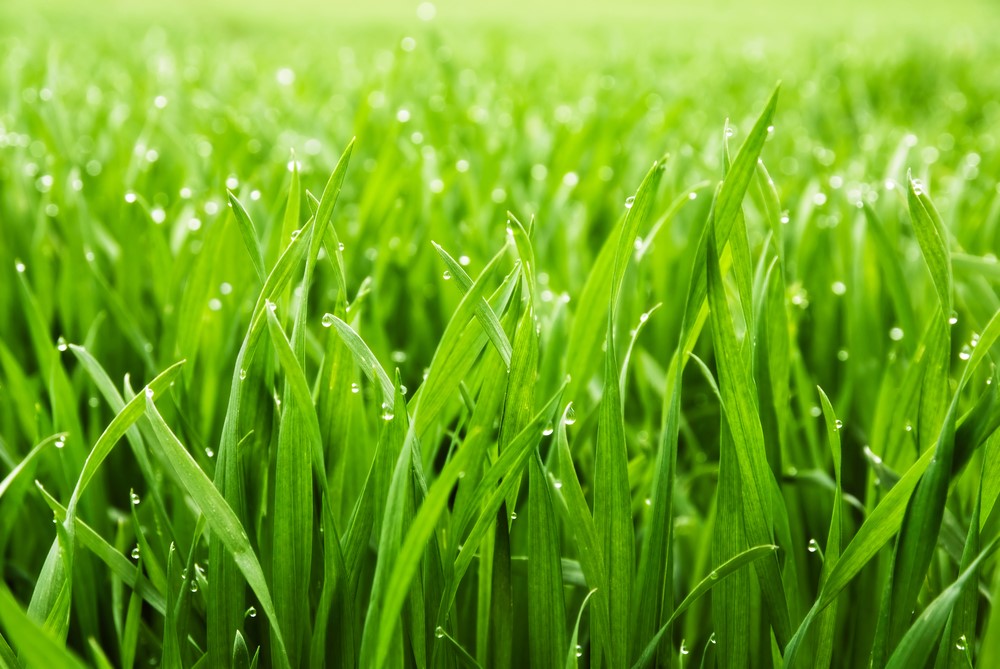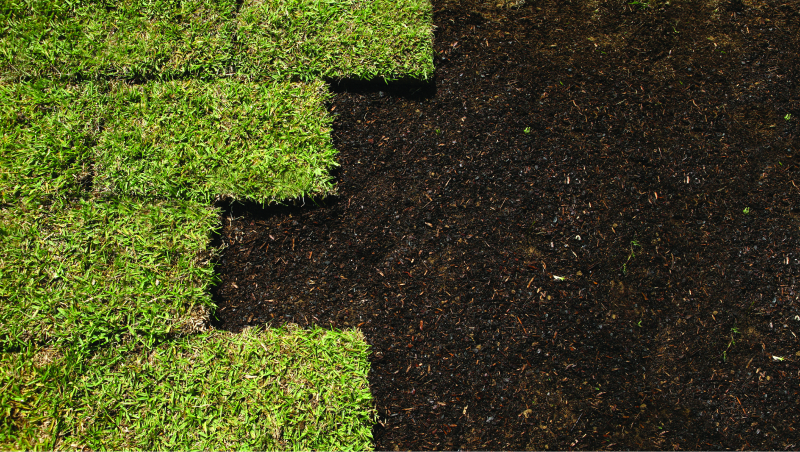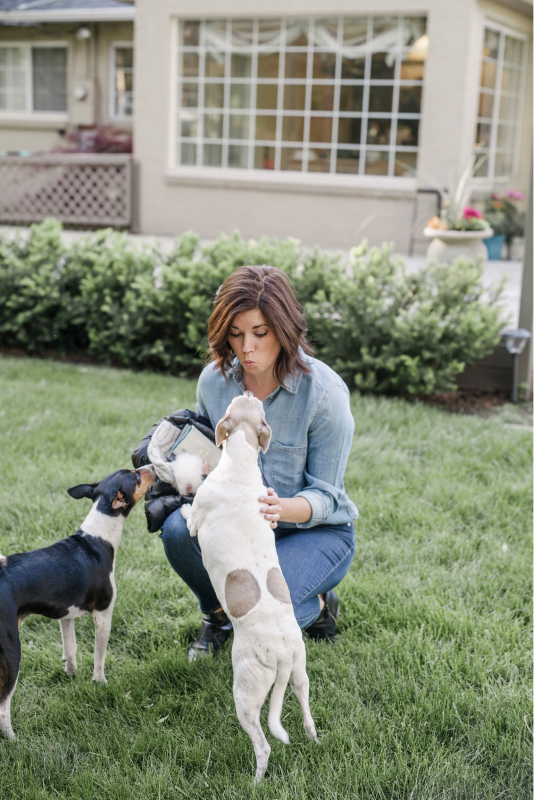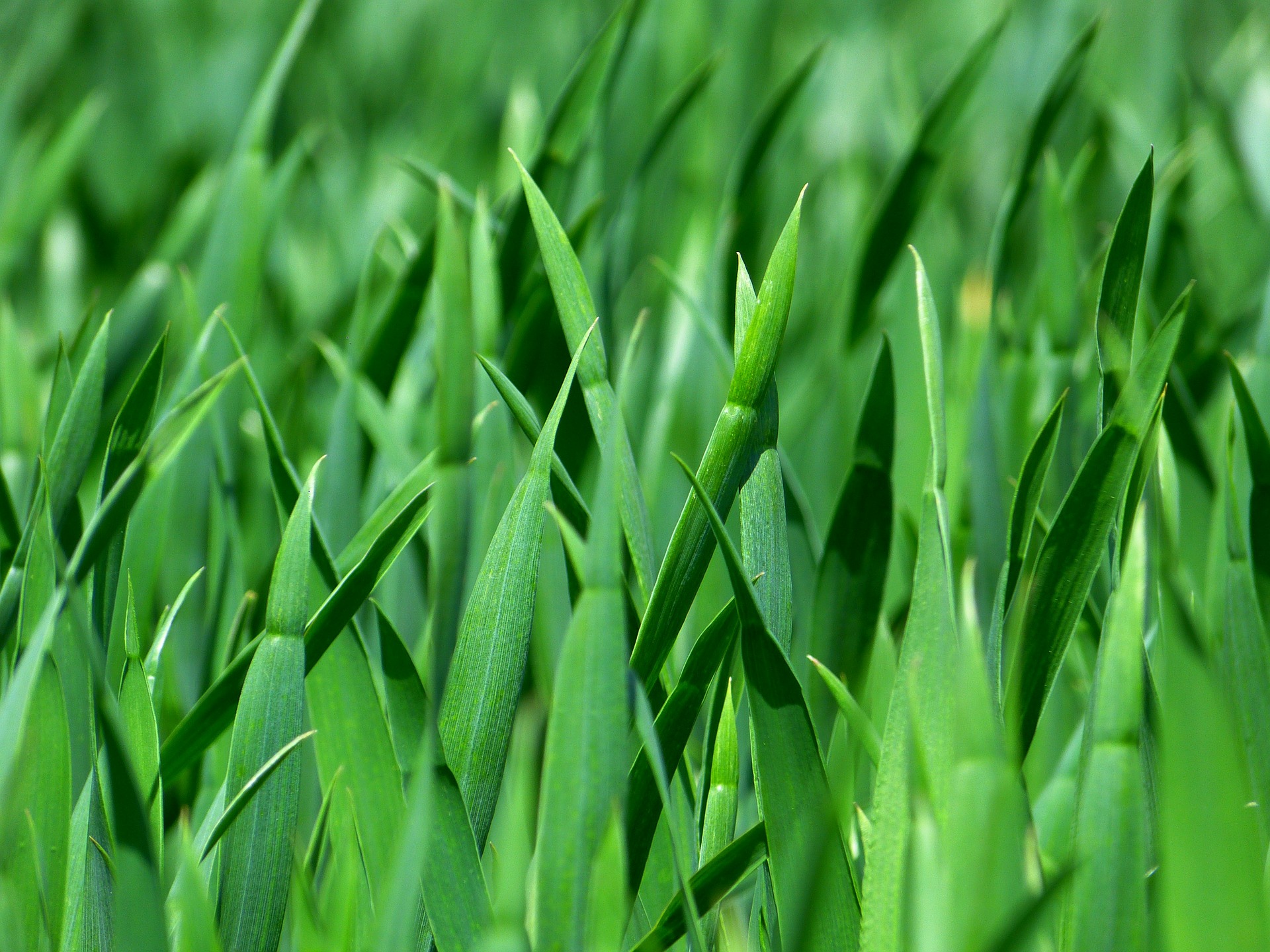
The Easy Guide to Growing healthy, Green Grass
Many homeowners dream of a lush, green lawn. A patch of healthy grass adds curb appeal to your home, but for many people, it seems like an insurmountable task. Many homeowners assume that the only way to get a great-looking lawn is to invest in sod, and spend every weekend carefully maintaining it.
The fact is, though, that with the right preparation and planting, anyone can have a beautiful lawn. Knowing how to grow grass isn’t rocket science, but it does require following a few important steps. Follow our steps and you’ll soon have a healthy lawn your entire family can enjoy.
Steps to Growing Green Grass for Your Law
The first step to growing a healthy green lawn is to know when to plant the seed for the best results. As with any plant, this depends largely on where you live, and the type of grass you plan to grow.
Most grass is either cool weather grass or warm weather grass. This means that it grows best in either cool or warm temperatures. Cool weather grass grows best in colder climates, and includes varieties such as perennial ryegrass, fescue, and Kentucky bluegrass. For warmer climates, warm weather grasses like Bermudagrass, Bahiagrass, Zoysiagrass, and Centipedegrass are a better option.
1) When to Plant Seed on Your Lawn
The best time to plant grass seed when you are planting cool weather grasses is when there is no danger of frost, and when the soil temperature is warm enough to germinate the seeds. This usually means either mid-to-late spring or early fall. During these periods, the soil is the right temperature, there is typically enough rain to keep the soil moist and aid germination, and there is enough daylight to ensure that the grass thrives. Ideally, the daytime temperatures should be between 60 degrees to 75 degrees to support healthy growth.
Warm weather grasses, usually grown in the southern half of the U.S., should be planted in late spring or early summer, their most active growing period. When daytime temperatures average about 80 degrees is the best time to plant.

2) Preparing Your Lawn for Overseeding
If you are adding grass seed to an existing lawn, prepare the site by mowing the grass, and then loosening the top quarter-inch of topsoil in any bare areas. Remove any debris or dead grass from the areas you will overseed. Resist the temptation to add new topsoil, as that could potentially contain weeds that will choke out new growth.
If you are starting a new lawn, be sure that the site is as level as possible before planting seed. Any divots or low areas could potentially develop continuous puddles, and become difficult to mow. Avoid extreme slopes when possible, as this causes water runoff and dry grass. Again, use the existing topsoil to avoid introducing new weeds to the lawn.
3) Preparing the Soil for a Healthy, Green Lawn
You might be tempted to skip soil testing when planting grass, but taking the time to analyze your dirt can prevent a great deal of frustration and support a healthier lawn. You can purchase a soil test kit or work with your county’s cooperative extension to test the soil, which will tell you which, if any, amendments it needs to support the healthiest growth. Most grass types grow best in soil with a pH of 6.0 to 7.0; if your soil reads too acidic (below 6.0) you need to add ground limestone, while soil that is too alkaline (about 7.0) will benefit from the addition of compost. The results of the soil test can also help you select the best fertilizer to add nutrients back into the soil.
4) Selecting the Right Seed for Your Soil
You can have the best soil in the world, but if you don’t start with the right seed, your lawn is not going to be as healthy and green as you want it to be. Apart from choosing the type of grass to grow, you need to carefully choose the seeds you plant. It is worth investing in the highest-quality seeds possible, as your lawn will grow healthy from the start and you won’t have to constantly fill in bare patches or overseed to thicken the lawn.
Consider purchasing a mix of grass seed, which includes several different types of grass and can improve your success. Some seed mixes include fillers like annual ryegrass. You want to avoid mixes with more than 10 percent of these fillers, as they are included to be a “nurse grass” for your new shoots. These grasses grow quickly and provide support and protection for the slower-growing perennial grasses, but will die when the first frost hits and won’t come back.
If you are planting grass in a shaded area, choose a grass seed that is designed specifically for those conditions. The best grass seed for shade in cool areas is rye or fine fescue; in warmer climates, St. Augustine or Zoysia are good choices.

5) Planting the Seed into the Soil
If you are planting grass seed in a small area, you can spread the seed by hand, aiming for about 16 seeds per square inch of soil. Be careful not to add too many seeds in one spot, as the seedlings will crowd each other out and the grass will be thin and weak.
For larger areas, use a spreader (either manual or mechanical) to spread the seed. Walk slowly to ensure adequate seed coverage. Once the seeds have been spread, drag the area to cover the seeds with no more than a quarter inch of topsoil. Don’t bury the seeds too deeply, as they need plenty of light to germinate. If you planted on a slope, a thin layer of straw (thin enough that you can still see the seed bed underneath) can help keep the seeds from washing away.
Once the seeds are planted, feed them. The extra nutrients helps the seedlings grow stronger and faster. Germination typically takes anywhere from five to 21 days, with full roots established within one to three months. Keep in mind that new seedlings cannot withstand foot traffic or other stress for several months, so try to stay off the grass as long as possible.
6) Watering Your Soil
Newly planted grass needs plenty of water. To keep the seed bed moist, water lightly — avid saturation, which will wash the seeds away — every day until the grass is two inches high. As the grass gets taller and stronger, you can reduce the frequency of the waterings and water more deeply. Mature grass should be watered at least twice a week, with the water reaching six to eight inches deep to ensure soli root growth.
7) Monitoring and Maintaining Your Grass
Once your grass is several inches high, you need to monitor and maintain the lawn to keep it healthy and beautiful. Keep a close eye on moisture levels; a lack of moisture is the leading cause of brown or dead lawns. Watch for bare spots caused by pets, foot traffic, or seeds that were planted thickly enough; certain diseases and fungus can also cause your lawn to die.
You’ll also want to keep fertilizing your lawn to keep it healthy. Most established lawns need feeding up to four times per year. Fertilize cool season grasses after germination, with the last feeding in October. Warm season grasses should be fed the spring after they are planted.
Mowing your lawn is also key to keeping the grass healthy. Never trim more than one-third length of the grass blades to prevent weeds, disease, and weak grass. Keep your mower blades sharp and vary the mowing pattern to ensure that the grass grows evenly, discouraging disease and pests.

DIY or TruGreen Expert Lawn Care Services?
Many homeowners live to take care of their lawns themselves, as it’s cost effective and they appreciate the sense of accomplishment that comes from maintaining a healthy, vibrant lawn. Once your grass is established, taking care of the lawn really only requires a good lawn mower, the right fertilizer, and the willingness to put in the work. However, the DIY approach can prove costly if you don’t do your homework, and start with a well-prepared site and the right seeds.
Hiring professionals to care for your lawn like TruGreen ensures that your lawn always looks great, since they use the right materials, and have access to top-of-the-line fertilizers and other products that are more effective than consumer versions. TruGreen professionals can also identify problems earlier and provide the right solutions, preventing bigger problems before they start. From site preparation to soil testing to ongoing maintenance, a lawn service takes the burden of lawn care off the homeowner, but it does come with added cost.
It is possible to have a healthy, green yard, if you get off to a good start. In most cases, you can completely transform your yard in just a few months by following these simple steps. If you’d prefer to have the TruGreen lawn care professionals take care of overseeding and developing your lawn, contact us today at 800-464-0171




 Branch Finder
Branch Finder









